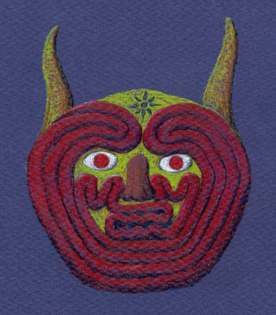

The Face of Humbaba was connected with Haruspicy (Liver Divination) as it was practiced in the ancient Near East,[276] and it would not be surprising if the Labyrinth were similarly used.[277] They are also both lopsided.[278]
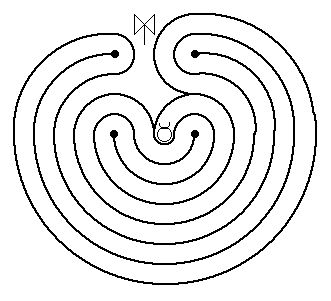
Darkness is a circular Labyrinth such as seen on ancient coins from Knossos dating from the second century BCE.[263] Although this is later than the square Labyrinth on Knossos coins (4th cent. BCE), Kerényi[264] claims that the circular form is older. Indeed, Skotia is carved in the Tomba del Labirintho in Luzzanas, Sardinia, which may date to the third millenium BCE.[265] It also appears on an Etruscan vase, dating to the end of the seventh century BCE, where it is labeled TRUI (= Troia, i.e. Troy).[266]
Pennick[267] describes the construction of this Labyrinth by means of a cord tied with 16 knots separated by one-half unit. The circular arcs can be marked by grooves in sand or dirt, or by chalk, flour or some similar marking material. It fits in an area 30 knots wide and 27 knots deep, and its largest radius is 15 knots. The path comprises 602 knots. The four end-points of the walls define an inner square 8 knots (4 units) on a side.
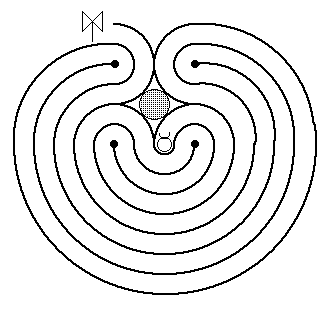
The Crown is a minor variant of Darkness, which has a slightly longer entryway, and leaves an Untouchable Area (an equal-armed cross) in the center of the inner square. It fits in an area 30 knots wide and 27 knots deep. If a knot is one and one-half paces, then the Path comprises 1395 paces.
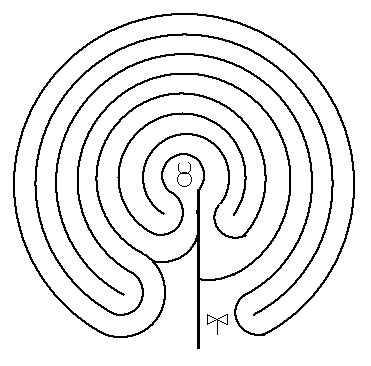
The Divine Man or House of Daedalus is another variant of Darkness, which occupies an exactly circular area with a radius of eight units (and thus fits in a square area 16 units on a side). If a unit is one and a half paces, then the Path comprises 452 paces. (Unlike Darkness and The Crown, Divine Man does not have an inner square, nor is it strucured around a cross.) This Labyrinth is called "Domus Dedali" in a ninth century CE manuscript of St. Gall.[268]
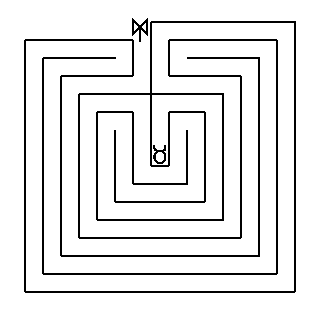
This Labyrinth comes from a tablet from the palace of Nestor at Pylos (c. 1200 BCE), which makes it one of the oldest examples of the Classical Labyrinth.[269] The Troy Labyrinth is structured around an equal-armed cross (representing the Four Rivers of the Underworld) and has a stepped face; it fits in an area 15 units square. If one and a half paces is the unit, then the Path comprises 490 paces; if the unit is two paces, then the Path is 872 (which is the numerical value of LABURINThOS, Labyrinth).
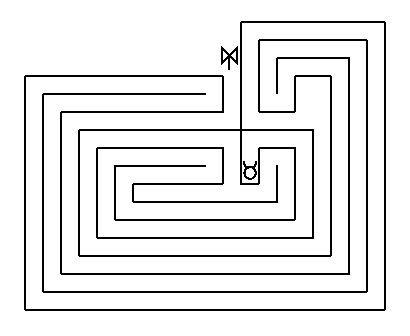
The Sacred Labyrinth is structured around a cross (the Rivers of the Underworld) and has an extremely stepped face, but fits in an area 20 units wide and 16 units deep; its path is 284 units long. This Labyrinth (with slightly different proportions) is inscribed on a tile from the Parthenon and probably dates from the beginning of the fourth century BCE; the tile is painted yellow.[270]
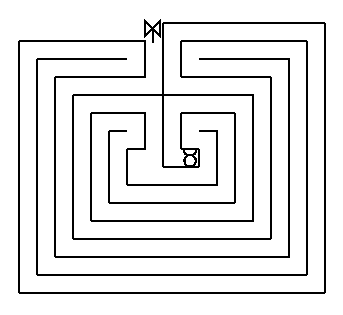
The Beast is a variant of the Troy and Sacred Labyrinths, which is structured around a cross, has a stepped face and fits in an area 17 units wide and 15 units deep; the Path comprises 247 units. It was found on a crimson pillar in the House of Marcus Lucretius in Pompeii, where it is labeled Labyrinthus Hic habitat Minotaurus (The Labyrinth: Here dwells the Minotaur), thus connecting it explicitly with the Minotaur.[271]
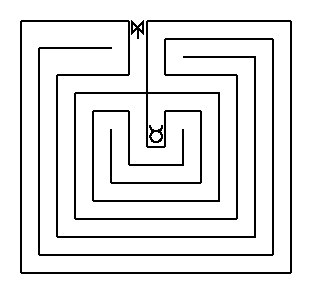
The High Priestess is a rectangular Labyrinth appearing on coins from Knossos after the fourth century BCE.[272] It is structured around a cross and has a flat face; as a consequence the passages are not all the same width. It occupies a rectangle 15 units wide and 14 deep. Because of its unequal Path width, its area, 210 square units, is not equal to its Path length, 204 units. If the unit is two feet, then the Labyrinth's area is 840 square feet.
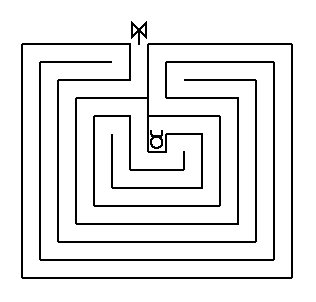
The Unspeakable Labyrinth, also known as the Twisting and the Snake, occupies a rectangular area 15 units wide and 13 units deep. It has a flat face, but not a central cross. If the unit is two paces, then the Path comprises 780 paces. The Unspeakable Labyrinth is similar to a Labyrinth known as Caerdroia ("City of Troy").[273]
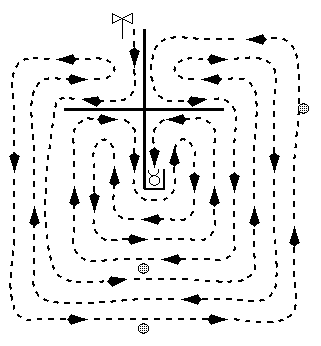
The Iakkhos is the simplest Labyrinth; since the Path is not marked, it is necessary that Theseus memorize it. (The turns are RRLL RRLL.) An equal-armed cross (representing the rivers of the underworld) is marked out on the ground; optionally one to three candles or stakes can be used to delimit the Labyrinth area. The Labyrinth occupies an area 15 units square. If the unit is two paces, then the Path will be about 900 paces long.
![]() Return to Biblioteca Arcana page
Return to Biblioteca Arcana page
 Send comments about this page
Send comments about this page